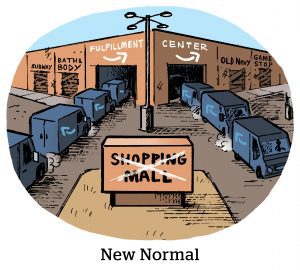Digital video ad spend is becoming more performance-driven.
Business outcomes – tangible metrics like sales, store visits, leads and website actions – are now the most important KPI for determining success with digital video, according to the IAB’s annual Digital Video Ad Spend & Strategy report released Tuesday. Advertiser Perceptions ran a quantitative survey in February of ad industry leaders involved with media buying, which the IAB commissioned.
While the first installment of the report revealed that total digital video ad spend is projected to grow 16% in 2024, this complete version also digs into the buy-side rationale behind investment decisions related to digital video.
Although video content was once regarded as a top-of-funnel marketing channel, its ubiquity makes it that much more important for advertisers to capitalize on for both top-of-funnel and lower-funnel campaigns. Outcomes were among the top three KPIs for measuring success across social video (64% of respondents), online video (54%) and CTV (54%) subtypes of video.
“We’re in a performance world now,” said Chris Bruderle, the IAB’s VP of industry insights and content strategy. “We are in a ‘don’t waste your dollars’ market. And business outcomes are more important than they’ve ever been.”
Everything’s coming up programmatic
Compared to both social video and online video, CTV spending didn’t grow as rapidly in 2023 – and likely won’t in 2024 either, thanks to the lingering effects of last year’s Hollywood strikes.
Buyers are also less likely to turn to CTV advertising partners when selecting based on ROI/ROAS and consider it slightly more important for driving brand awareness.
But there’s still plenty of demand for CTV spending, particularly of the programmatic variety.
Programmatic now accounts for three-fourths of all CTV transactions, divided almost evenly among ad networks, open exchanges/DSPs and PMP/preferred deals/programmatic guaranteed.
Why? According to the IAB’s survey, the top three reasons buyers cited were easier campaign optimization, better ROI/ROAS and greater ease achieving scale. Better pricing, long associated with programmatic, only ranked fourth among buyer concerns.
Besides programmatic’s better performance and functionality, Bruderle theorizes that an influx of smaller buyers, who are used to operating programmatically, likely migrated from social video to a more affordable CPM in CTV spending.
Measure for measure
Like all advertising channels, digital video still has its drawbacks, particularly in measurement.
Two out of three buyers polled found issues across nine key areas of measurement, especially related to measuring co-viewing among members in a household, placement transparency and brand safety.
The problems are even more intense for smaller spenders, who require more precise measurement to hit their specific targeted audiences – and who also represent the majority of dollars spent in advertising.
These spenders, said Bruderle, are “what helped the social and search platforms have so much success over the last two decades.” Successfully reaching them will require better transparency and more confidence on the part of newer sell-side platforms.
In the meantime, AI tools may provide a possible solution to better understand ad performance and overcome signal loss in some digital environments. Roughly 37% already use it to mitigate measurement issues, making it the most popular method ahead of data-driven attribution (35%) and multi-touch attribution, or MTA (34%).
Alternative options
The quest for more accurate measuring is also leading buyers to pursue alternative currencies.
As the IAB’s report notes, 51% of advertisers are testing or transacting using alternate currencies into their approach for 2024, and an additional 38% are discussing alternate currencies with vendors, citing multiscreen attribution and real-time reporting as their top reasons for making the jump.
The fact that alternative currencies are primarily based on big data, instead of solely panels, doesn’t hurt, either. “You can get more granular demographic data, so you can really understand what is engaging with your product and your messaging,” said Bruderle.
Plus, 66% of buyers focus on audience personalization capabilities when selecting ad partners within each channel, so having granular demographic data matters to advertisers.
Having the right reach levels, the right KPIs, and the right audience – “Those three things working together will give [marketers] success,” said Bruderle.

















